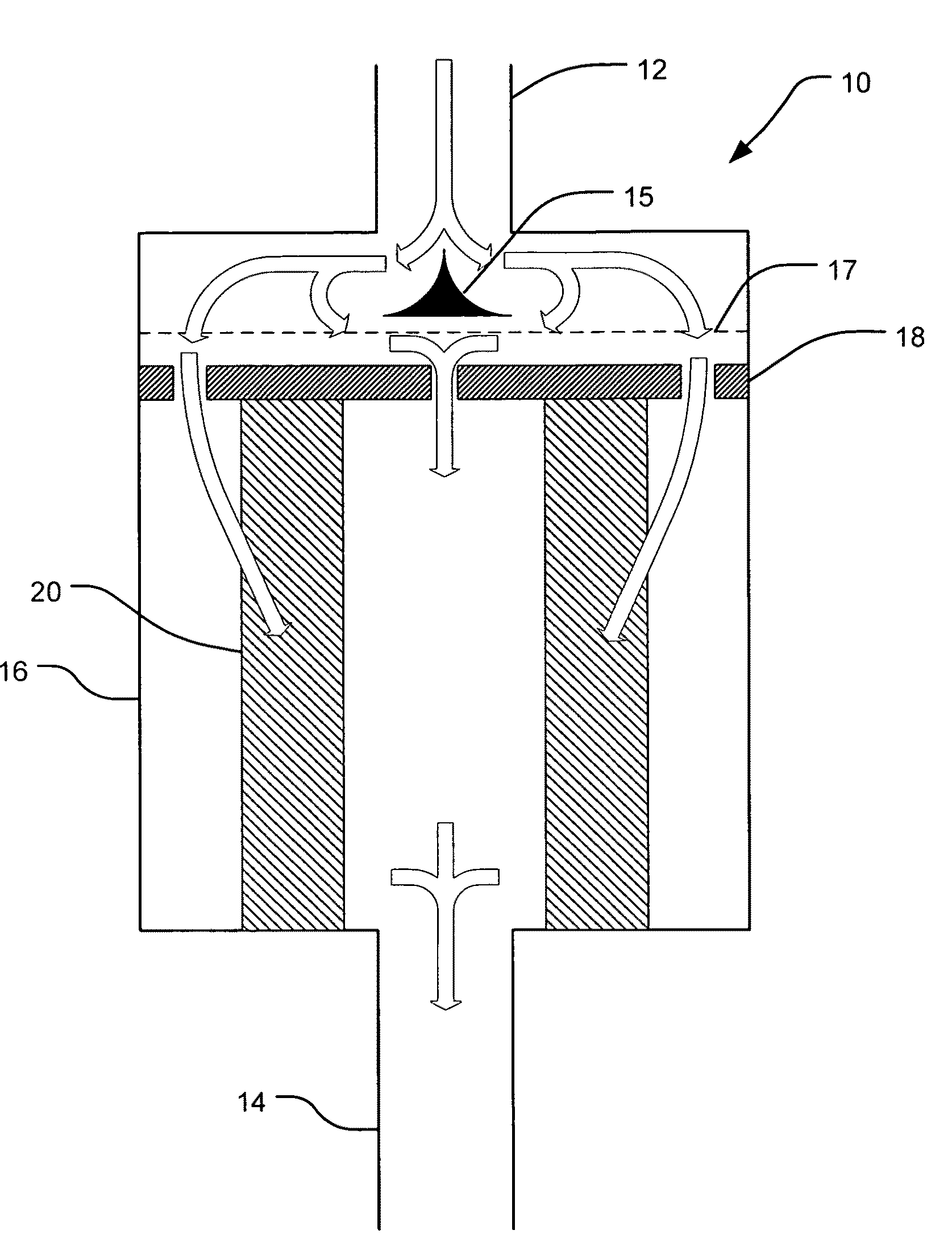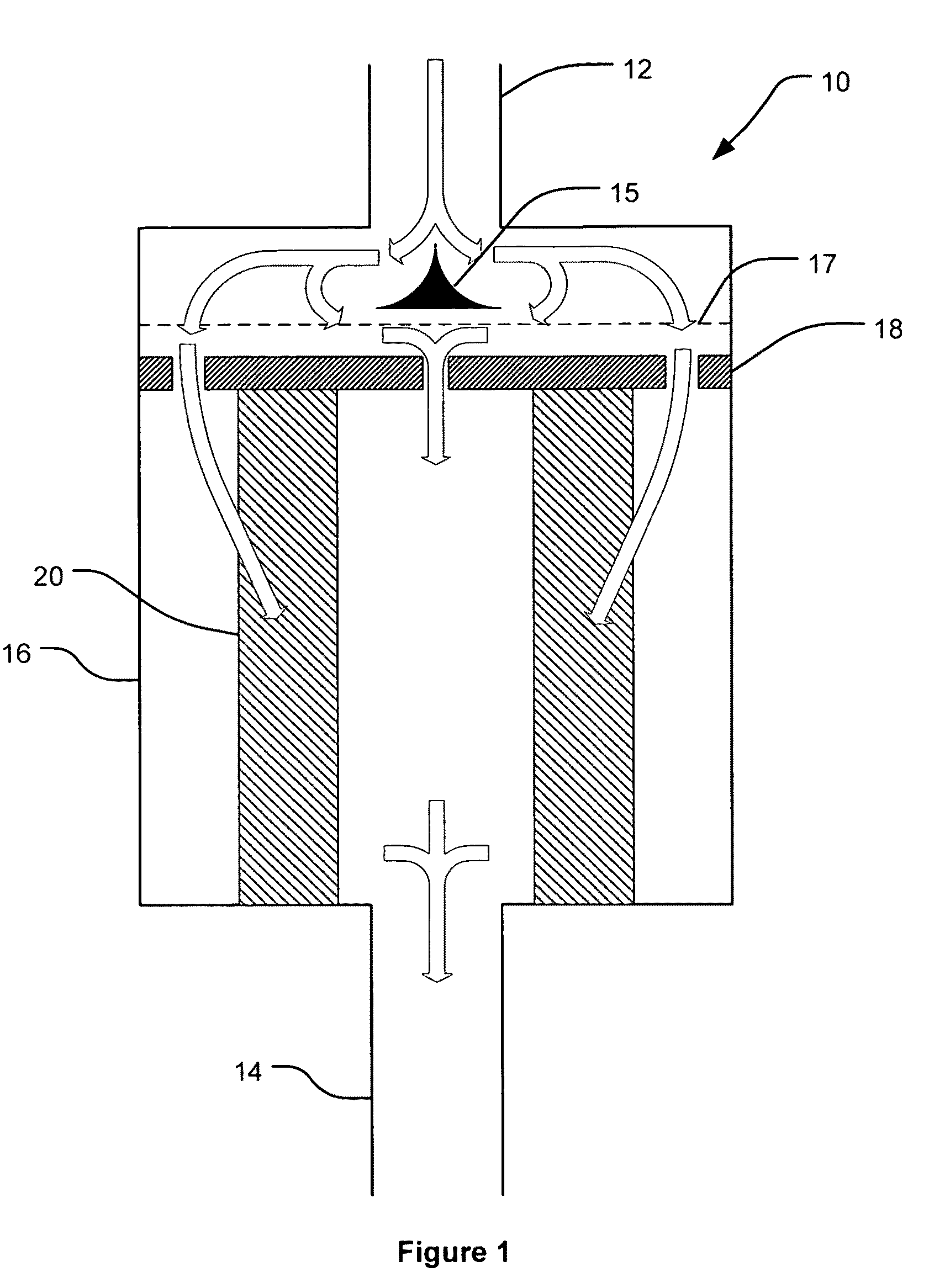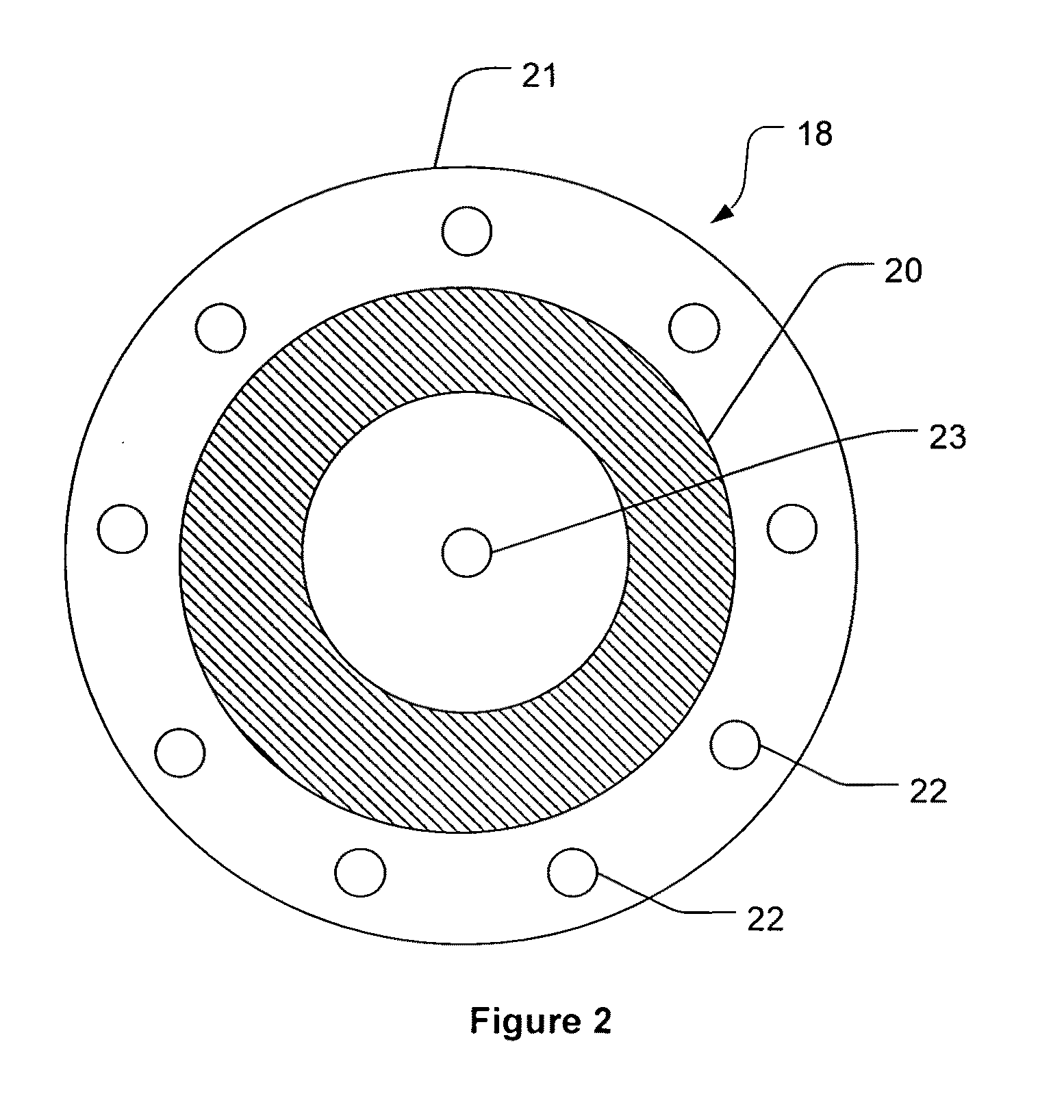In-Line Smoke Attenuator
a smoke attenuator and in-line technology, applied in the direction of fire alarms, separation processes, instruments, etc., can solve the problems of reducing the amount of sample air drawn from the region being monitored, premature failure, and problems such as the smoke detection apparatus
- Summary
- Abstract
- Description
- Claims
- Application Information
AI Technical Summary
Benefits of technology
Problems solved by technology
Method used
Image
Examples
Embodiment Construction
[0069]In FIG. 1 filtering apparatus 10, hereinafter termed a “smoke attenuator” is shown, having an inlet 12, an outlet 14, and a housing 16. Within the housing 16 is a flow separator 18 (shown in FIG. 2) and a filter 20 (shown in FIGS. 1, 2 and 3). In the present example the flow separator 18 is a plate 21 having a number of apertures 22 and 23 formed in it. These apertures are shown in greater detail in FIG. 2. In this example the flow separator separates the single flow of air entering the inlet into a filtered sub-flow (air passing through apertures 22) and an unfiltered sub-flow (air passing through aperture 23). The filtered and unfiltered sub-flows recombine in the area after the filter, before exiting the filter outlet 14. A flow distributor 15 may be placed near the inlet 12 to assist in distributing the flow evenly within the housing. An insect screen 17, e.g. formed from a wire mesh, may also be placed within the housing to prevent insects and very large particulate mater...
PUM
| Property | Measurement | Unit |
|---|---|---|
| Time | aaaaa | aaaaa |
| Flow rate | aaaaa | aaaaa |
| Diameter | aaaaa | aaaaa |
Abstract
Description
Claims
Application Information
 Login to View More
Login to View More - R&D
- Intellectual Property
- Life Sciences
- Materials
- Tech Scout
- Unparalleled Data Quality
- Higher Quality Content
- 60% Fewer Hallucinations
Browse by: Latest US Patents, China's latest patents, Technical Efficacy Thesaurus, Application Domain, Technology Topic, Popular Technical Reports.
© 2025 PatSnap. All rights reserved.Legal|Privacy policy|Modern Slavery Act Transparency Statement|Sitemap|About US| Contact US: help@patsnap.com



